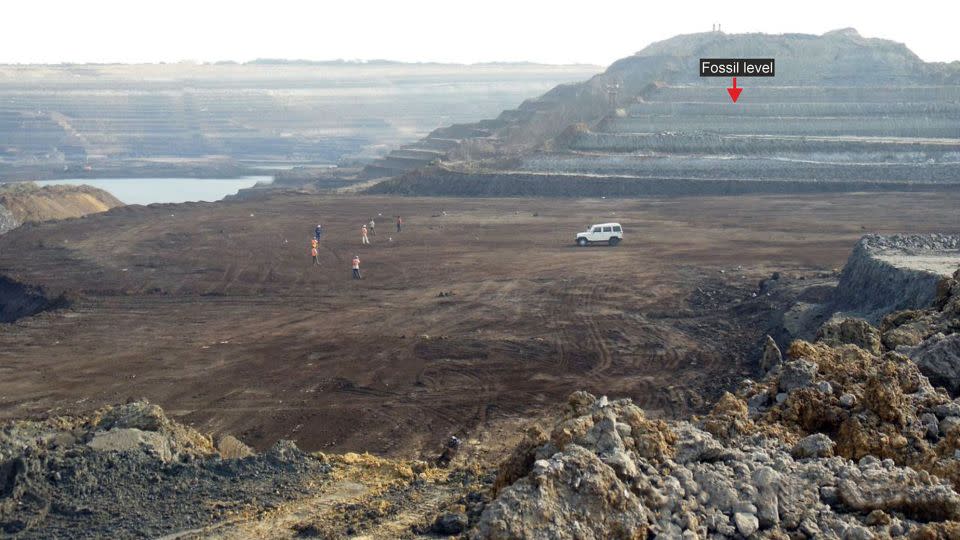Sign up for CNN’s Wonder Theory science newsletter. Explore the universe with news about fascinating discoveries, scientific breakthroughs and more.
A giant prehistoric snake, longer than a school bus, slithered across what is now India 47 million years ago, according to new research.
The extinct snake may have been one of the largest to ever exist, dwarfing current-day anacondas and pythons that can grow to about 6 meters (20 feet). The colossal creature’s scientific name is Vasuki indicus, named after the mythical serpent wrapped around the neck of Hindu deity Lord Shiva and the country of its discovery.
The snake was likely a slow-moving ambush predator that subdued its prey by constricting or squeezing them to death, according to the study, published Thursday in the magazine Scientific Reports.
Analysis of giant vertebrae fossils
The report’s two authors, based at the Indian Institute of Technology Roorkee in the state of Uttarakhand, analyzed 27 fossilized vertebrae – some still connected together – that were discovered in 2005 in a coal mine in the western Indian state of Gujarat.
Initially, the team thought the bones belonged to an ancient crocodile-like creature. Only when researchers removed sediment from the fossils during the initial phase of the study in 2023 did they realize that “they were looking at the remains of an exceptionally large snake,” the authors said.
The vertebrae appeared to belong to an adult animal, the study said.
“There are a number of possible reasons for their large size, ranging from a favorable environment with ample food resources to a lack of natural predators,” said co-authors Debajit Datta, postdoctoral fellow, and Sunil Bajpai, professor of paleontology, in a joint email. .
“Another driving force could be the prevalence of warmer-than-current climate conditions,” they said.
Based on the size of the preserved vertebrae, researchers estimated that the snake was between 10.9 meters (36 feet) and 15.2 meters (50 feet) long, based on two different calculation methods, with a wide, cylindrical body. .

Debajit and Bajpai said they believe it lived on land rather than water, like an anaconda, but it is unlikely that it hung in trees due to its size.
The authors said body length estimates “should be treated with caution” because they did not have a complete skeleton. However, the snake would have rivaled the largest known snake species – the extinct Titanoboa – in size.
Identified from fossils in Colombia, Titanoboa would weigh 1,140 kilograms (2,500 pounds) and measure 13 meters (42.7 feet) from nose to tip of its tail.
Snake size and the role of climate
Snakes are cold-blooded and need the heat of their environment to survive. Its size therefore depends on how hot the climate is.
“Internal body temperature fluctuates with ambient temperature,” the authors said. “Therefore, higher ambient temperatures would have increased Vasuki’s internal body temperature and metabolic rate, which in turn would have allowed him to grow so much.”
The team was able to infer, based on information about the size and metabolism of living snakes and current temperatures, that Vasuki lived in a hot tropical climate, with an average annual temperature of 28 degrees Celsius (82 degrees Fahrenheit).
Datta and Bajpai said the snake lived in a coastal swamp and swamp.
“We cannot say precisely what kind of animals Vasuki ate,” they said. “Associated fossils collected from the rocks that gave rise to Vasuki include rays, bony fish (catfish), turtles, crocodilians and even early whales. Vasuki may have taken advantage of some of them.”
For more news and newsletters from CNN, create an account at CNN.com




































